Falkland Conflict 1982 r or slightly alternative history
Since the Falkland conflict, 1982 has passed more than thirty years. The guns fell silent a long time ago, but the Internet battles are still going on and will probably continue for a very, very long time. Moreover, discussions are by no means limited to the interpretation of events that occurred in real life. stories - no less interesting opportunities are of no less interest. Of course, history as a science does not tolerate the subjunctive mood, but why not arrange a little mind game, and not try to answer the questions - and what if ...:
1) Would the most modern air defense systems be on British ships?
2) Would the British at the Falklands have a battleship?
3) Would the British squadron receive a full-fledged catapult aircraft carrier instead of the Hermes and Invincible VTOL carriers?
4) In addition to VTOL aircraft, would British aircraft carriers have AWACS helicopters?
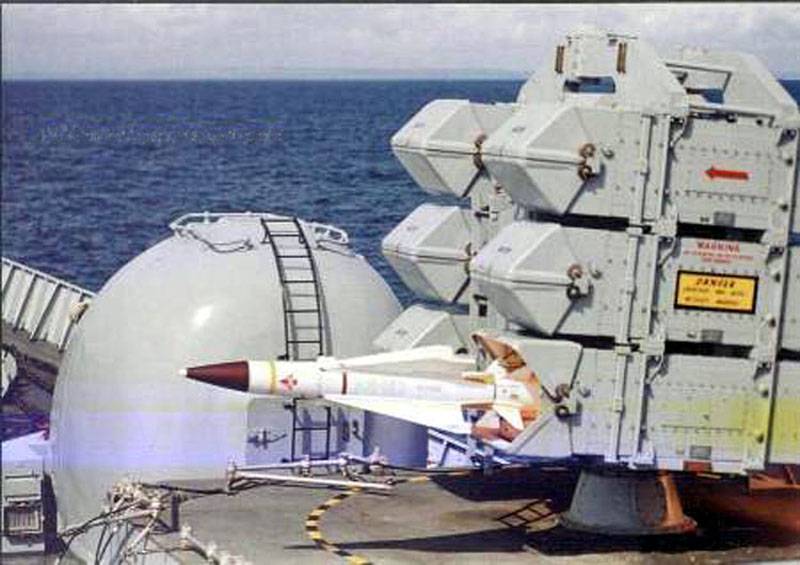
In the discussions of the Falkland conflict, the idea was repeatedly expressed that if the British had normal, modern anti-aircraft missile systems on board, the British air defense could be provided without any aircraft at all, and the British aircraft carriers would be completely unnecessary. Let's try to figure it out.
The most modern SAM for the British was the Sea Wolf, which entered the arsenal of the Royal fleet in 1979, i.e. just three years before the events described. This complex possessed truly impressive characteristics - capable of intercepting air targets flying at speeds up to 2M, it was fully automated, and according to passport data, the reaction time (i.e. from the moment the target was taken for escort to the moment the rocket was launched) was only 5 -6 seconds. The accuracy of the missiles was such that, according to the recollections of Admiral Woodworth, during the tests, the Sea Wolf successfully shot down 114-mm shells in flight. The frigates “Broadsword” and “Diamond” had two SAMs of this type each, i.e. one frigate was able to simultaneously fire 2 targets. True, the range of this air defense system was small - only 6 km., But against aircraft attacking with free-falling bombs, this shortcoming is quite tolerable.
We calculate the effectiveness of the complex, as is customary in the Internet. So, it is obvious that the frigate’s radar will detect planes long before the latter entered the SAM zone, even low-flying Skyhawks will be detected at least in 20 kilometers. The standard 967 radar for detecting air targets of the “Sea Wolf” air defense missile system is able to “see” and determine the parameters of a target with an EPR near 10 and 2 at a distance of 70 km. The 14 km is still flying to the zone of the “Sea Wolf” missiles of the same “Skyhook”, and the aircraft flying at a speed of 980 km / h (272 m / s) will need 51 seconds for this. The reaction time of the “Sea Wolf” is no more than 6 seconds, so by the time the attacking aircraft reach 6 km from the ship, all necessary calculations will be made, and the detection radar will transmit enemy target radar aircraft (the “Sea Wolf” has a radar 910). Start!
The rocket moves with a maximum speed above 2M, but the average speed will obviously be lower - we will take it equal ... well, let it be 1800 km / h or 500 m / s. Skyhawk moves towards the rocket at a speed of 272 m / s, the distance between them at the time of launch of 6000 m, the speed of approach - 772 m / s, the plane and the rocket will meet (roughly) 8 s after launch at 3800 m from the ship. Since the launch was made from two guides - the 2 of the aircraft was fired upon.
Over the past 8 seconds, the 967 radar captures the following targets long ago, so a couple of seconds (maximum) to take to support a new target, another 5-6 seconds, a reaction time and a restart! In 6-7 seconds, enemy aircraft will fly over 1900-2200 meters and will be in 1600 meters from the ship. So after a couple of seconds after the second launch of the missiles, the 2 pilots will meet with their Destiny. And 2 of the C-Wolfe air defense system will be able to “get it” on departure, having fired at them after dropping bombs when they are moving away from the ship.
It turns out that, counting on the passport data of the “Sea Wolf” air defense system, the Broadsworth frigate is capable of firing 6 airplanes in one attack. Given the fact that the probability of hitting a target with one rocket was considered equal to 0,85, one such frigate during the attack will knock down an average of 5 enemy aircraft.
Brilliant result! In theory. But in practice, 8 air attacks on the "Brilliant" or "Broadsward" (both frigates carried two Sea Wolves each) two attacks of the "Sea Wolf" air defense missile (software problems), and in one could not shoot at independent from a complex of reasons (the destroyer Coventry was in the firing line) and only in five cases out of eight was he able to take part in the battle. But for those five combat episodes in which the "Sea Wolfe" nevertheless took part, only 4 Argentine combat aircraft were shot down with its missiles. The best result was reached on May 12 - Brilliant was attacked by four Skyhocks and he destroyed two of them. In two other cases, "Sea Wolfe" shot down one plane per attack, and in one episode could not bring down anyone.
Unfortunately, the author was unable to find data on the actual consumption of the CI Wolfe missile systems. Dear V. Khromov in “Ships of the Falkland War. Fleets of Great Britain and Argentina "indicates:
Accordingly, the probability of hitting a target for one rocket according to V. Khromov is no more than 25-37,5%. Unfortunately, these data cannot be considered reliable - for a long time in print it was stated that "Sea Wolf" shot down five aircraft, later this number was reduced to four, but certainly not two or three. Accordingly, it can be assumed that the number of missiles launched is incorrect. Probably, V. Khromov did not take into account any episodes of the use of the air defense missile system, hence the understated data on the success of the "Sea Wolfe" and, if the conjecture expressed is correct, the underestimation of the launched missiles. Again, V. Khromov does not write: "Eight rockets were fired," he writes: "At least eight rockets were fired."
The author of this article believes that the British spent 4 Xi Wolfe missiles on the destruction of Argentina's 10 aircraft. This gives the probability of hitting a single 40% target, which is even slightly higher than the data of V. Khromov and a very good result for a real fight.
So, we see a gaping gulf between the passport and actual data of the “CI Wolfe” air defense system: if in theory it could fire up to 6 aircraft for one attack, then in practice the complex simply “overslept” almost 40% attacks. And in the remaining cases I have never been able to attack more than two planes, despite the fact that the probability of hitting a target with one missile turned out to be approximately twice as low as declared (40% against 85%).
But "Sea Wolf" turned out to be the most productive British complex: the most massive "Sea Cat" air defense system proved to be not only worse, but absolutely disgusting - there was only one (and dubious) hit on the 80 launches, i.e. the probability of hitting a target with one missile ranges from 0% to 1,25%.
Well, let's imagine for a moment that the Wizard in the blue Sea King flew to the area of the landing operation and waved his magic wand and all of the Sea Cat missile systems found the probability of hitting the Sea Wolf target. What happens in this case? During the fights at the Falklands, the "Sea Cat" launched 80 rockets. Accordingly, with the probability of hitting 40%, 32 missiles from these 80-and reached the goal.
But it should be borne in mind that several ships often fired at the same group of Argentine planes: for example, on May 21, the three Daggers were fired at Argonot, Intrepid, Plymouth and Broadsward with missiles - but only Broadwords Has achieved success. Those. even if only one rocket was fired from each of the four ships, all the same, at least one of the Argentine planes was fired at by two rockets. And given the fact that the British clearly did not have time to distribute targets on the air defense system from different ships, it is possible that only three, or even only one, aircraft were fired at from three “Daggers”. Therefore, 32 “effective” missiles, calculated by us, do not mean 32 shot down an aircraft - given that several “efficient” missiles can “aim” at the same machine, it is unlikely that the number of downed machines would exceed 25-27 pieces - and and less. VTOL destroyed at least 21 military aircraft of Argentina. Accordingly, it can be said that even if the Sea Harriers suddenly disappeared, and the most massive KVMF anti-aircraft complexes miraculously acquired the effectiveness of Sea Wolf, this would have had a negligible effect on the final result, if at all. And if you end up with the effectiveness of the "Sea Cat" air defense missile system to "Sea Wolfe", then you should expect a level of air defense that is approximately comparable to what Sea Harriers provided. As it has already been proved in the articles of the Falkland cycle, the task of air defense of the C-Harrier compound failed. Accordingly, the “improved C Cat” would also have failed her.
But in fact, all these arguments are nothing more than fantasies - how could the British get so many of the newest air defense systems? After all, "Sea Wolfe" entered service only in 1979 year. It is clear that this complex should have been expected on ships coming into service since 1979, but what miracle could it have been on earlier ships? The peculiarity of the navy is that the warship is a very long-lived weapon system. These warriors of the seas and oceans serve for 30 years and more, and even fleets that carry out regular renewal of their composition approximately on 2 / 3 consist of ships of at least 10 age. At the same time, even for the richest countries, it is impossible to carry out fleet upgrades so regularly that their naval forces are equipped with only the latest weapons. Accordingly, a large squadron, which included the main combat-ready ships of the fleet, by definition will carry a significant amount of not the most modern weapons. Dreaming otherwise is not forbidden, but the Wizard in the blue "Sea King" still does not arrive.
But maybe in other Western countries there existed an air defense missile system, which the British could adopt instead of the “Sea Cat”, and due to this, dramatically increase the effectiveness of their own air defense? Alas - there were none. "Sea Sparrow"? The first versions of this air defense system were very unreliable structures in which the operator for targeting missiles had to “drive” the target visually.
More advanced systems with fully automated guidance appeared only at the very end of the 70s, respectively, the British fleet could not have been massively equipped with them in 1982. At the same time, the real effectiveness of Sparrow missiles even in polygon conditions of Desert Storm (external target designation from AWACS aircraft, a lot of time for rapprochement, firing at non-maneuvering targets) did not exceed 40%, and even according to the most optimistic estimates. But there is one more important factor - one of the problems of Sparrow missiles was the poor performance of its semi-active GOS against the background of the underlying surface. Despite the fact that the British landing site in the Falkland Strait was just one continuous underlying surface: attacking planes against the backdrop of the mountains. Those. one can, of course, assume that Sea Sparrow will show somewhat greater efficiency than Sea Cat, but in the specific circumstances of those battles this difference would hardly have been any significant. In any case, “Sea Sparrow” lost much to “Sea Wolfe”, and therefore, even if the British frigates polls got Sea Sparrow, it’s not that they would defeat the Argentinean Aviation, but at least just inflicting losses at the level of VTOL, they would not be able to.
And what else? French "Naval Crotal"? Very good (at least according to the passport specifications) complex, but it also entered service only in 1979-80, and could not be massive to 1982 in any way.
Of course, there is also barreled artillery. For example - "Volcano-Falanx", which, in theory, could shred attacking planes in batches. What is its real effectiveness, we still do not know, but do not forget that the "Falanx" was adopted only in the 1980 year, and also could not be massive to the 1982 year. A very perfect “Goalkeeper”, according to some data, significantly exceeds the “Falanx”, but he entered service only in the 1986 year and had no time for the Falklands conflict.
It would be interesting to try to imagine what the squadron of the Soviet ships could do in those conditions - aircraft-carrying cruisers like 1143, BOD of the project 1134-B, etc. with their various types of air defense systems and a bunch of 30-mm "metal cutters". Here (perhaps!) The result could be different. But for British ships, which Western air defense systems do not put on them, there was no solution capable of replacing “Sea Harriers”.
What would happen, send the British to the Falklands modernized "Vanguard", equipped with the latest air defense systems? The answer to this question is diametrically opposed depending on whether the battleship will go togetherЕ with the aircraft carriers Hermes and Invincible or togetherО of these aircraft carriers. If, nevertheless, together, then the defenders can only sympathize - after landing the 380-mm high-explosive shells, they very quickly discourage any resistance to the Argentine infantry. The British already note the significant role of naval artillery in this conflict, and after all only 114-mm guns of British frigates and destroyers fired. The effect of the 885-kilogram mines would be truly amazing. So, if the British had managed to keep Vanguard in the ranks by the year 1982, it could have provided extremely important and, perhaps, even decisive support to the British ground forces on the Falklands.
But if the battleship had been sent together aircraft carriers - alas, nothing good came of it. Yes, of course, “Vanguard” is completely non-destructive for bombs and missiles of Argentina (except that the submarine San Luis could get it with torpedoes), even if it was equipped with the latest air defense system at that time, it could not do the most important thing - to provide air defense of the landing zone landing. As a result, the Argentines, almost without incurring losses from naval air defense systems and artillery, would have caused heavy damage first destroyers and frigates, and then the British transport. Without the Sea Harriers, the British simply could not have inflicted enough casualties on the Argentine Air Force to stop them from attacking ships and switch to land targets. So sending an amphibious connection under the protection of a battleship would most likely lead to the destruction of this amphibious connection from the air, which the battleship would not have been able to prevent ...
... Or could it? One of the authors of TOPWAR, the singer of battleship power, Oleg Kaptsov, in the discussion suggested the following reconstruction: the mighty battleship a la Missouri, equipped with Tomahawk cruise missiles, first erases Argentina’s military airbases to dust - and more than that, Argentine planes have nowhere else to fly! Then - the landing and demonstrative incineration of the field fortifications of the defenders (also mostly unfinished). Here and the tale is over!
It is hard to imagine how much “Tomahawks” would have to spend in order to completely destroy the airfield-based system with which Argentine aviation could “work” on the Falkland Islands. In total, Argentina has more than 140 airfields with artificial turf pitch, but how many of them are located close enough to the coast so that Skyhawks and Daggers can reach Falkland from them - the author is unknown. It is even more difficult to predict how the world community would react to the defeat of civilian airfields with cruise missiles — after all, they would have to be destroyed just like military ones. But we will not ask these questions, but simply take it for granted that all this is possible and acceptable. So, it turns out that the rocket battleship could solve the issue of the Falkland Islands?
With such initial ones - probably, yes, but here's the bad luck ... It is completely unclear why a battleship is needed for the above. If we already allow the possibility of destroying the Argentinean airfield network with cruise missiles, then such missiles can be launched even from a destroyer, even from a submarine, a battleship is absolutely not required for this. But for the artillery support of the landing force, the battleship is not needed either - for this, it is more than enough to equip one or two powerful 152-203-mm guns with sufficient ammunition to each of the amphibious transports of Britain. One glance at the map suggests that the 25-30 km naval artillery system reliably overlaps any defensive positions of Gus Green, Darwin, Port Stanley ... Argentine field fortifications could not withstand artillery of eight-inch caliber, and really serious fortifications like this. Maginot was not there. Of course, 381-mm projectiles would be both more effective and destructive, but the power of 203-mm artillery to suppress Argentine defense was quite enough. And the waterfowl "Iron Kaput" of several tens of thousands of tons is absolutely not necessary for this.
Where could he have come from the English? There are enough options: in the middle of the 60, the British were going to build full-fledged ejection aircraft carriers such as the Queen Elizabeth (CVA-1), but for reasons of economy, the program was closed. As a result, instead of the CVA-1, the British fleet received aircraft carriers with vertical takeoff and landing of the Invincible type. However, if their lords had not hit the most unbridled economy, full-fledged aircraft carriers could have been built. However, there is another option - having two aircraft carriers of the Odoyshies type, which entered service in 1951 and 1955, the British managed to take both of these ships out of the fleet by the year of 1978. The Ark Royal served some 23 of the year ... But this ship could carry modern aviation at that time (Bukaniry and Phantoms).
Take, however, the aircraft carrier type "Queen Elizabeth." This ship with a full displacement in 54 500 t does not claim the title of supercarrier, but if it was built, it could carry the air group of the order of 50 aircraft and helicopters. Interestingly, such TTX approximately corresponded to the capabilities of Hermes and Invincible, who fought against the Falklands. Both of these aircraft carriers (together) had a 48 510 t full displacement and before the fighting began carrying 49 aircraft. But, of course, if in real history the British aircraft carriers were decorated with rather vague "Sea Harriers", then on the CVA-1 there would be located the 36 "Phantoms" and "Bukanirs", as well as the 4 DRLO aircraft Gannet AEW.3. And if the first ones do not need special representations, then the last of the above-mentioned aircraft should be told separately. Gannet AEW.3 was a rather strange sight - relatively small (maximum take-off weight - 11 400 kg), screw and low-speed (speed not higher than 402 km / h) the plane, however, had a crew of three (pilot and two Observer) and a very ancient, but still workable radar AN / APS-20 (which was equipped with the Argentine "Neptune"). And, extremely importantly, it could be in the air for 5-6 hours.
What would happen, have the British off the Falkland Islands such an aircraft carrier? As we recall, the original British plan was to destroy the Argentine air bases on the Falklands, simulate a landing, luring the Argentine fleet to the islands and destroying it there in a general battle. As you know, only the second point was a success - the Argentines really believed that the British were about to start the landing operation and brought the fleet to strike the amphibious group. But, not waiting for the English transports, they retreated - neither the Argentine airfields on the Falklands, nor the Argentine fleet could detect the British airfields. The inability of the Sea Harriers to carry anti-radar missiles led to the fact that the Argentinean airborne radar controllers, as well as the fire control radar, were not suppressed, which made the strike capabilities of VTOL aircraft almost zero.
At the same time, "Phantoms" and "Bukaniry" would easily have trampled the entire Argentine air situation monitoring system along with air defense into the damp Falkland soil, because the "Phantoms" could easily carry and use the RRP "Shrike", and the "Bukaniry" - suspended containers EW. After that, the British attack aircraft, capable of carrying tons of ammunition under the wings to 7, would defeat both the runways of both Argentinean airbases and the entire infrastructure that was located around them along with light aircraft. Air defense fighters operating from Argentine continental airfields could do nothing to help - as we know, only the guidance of ground services allowed them to engage in battle with British aircraft, and without external targeting, Argentine pilots could only patrol 5-10 minutes over the islands and fly home due to lack of fuel.
If the Argentine fleet tried to intervene - well, let us remember that the only “Neptune”, which was in extremely poor technical condition, could easily have uncovered the location of the British warrant and watched the British for several hours. Is it possible to assume that four British airborne early warning aircraft with a similar radar will not be able to find Argentine squadrons? Of course, anything can happen in a war, but the likelihood of British success is extremely high. Therefore, it can be argued that if the British had a full-fledged aircraft carrier, they would have achieved their goals from the very beginning, first destroying the Air Force, air defense and airspace controls on the Falklands, and then finding and drowning the Argentine fleet.
It cannot be excluded that this would be quite enough for the surrender of Argentina. But even if not, then ... The presence of four DRLO planes, each of which is able to be airborne for 5-6 hours, made it possible to ensure constant duty during daylight hours (the Argentines did not fly at night) both over the British squadron and over the amphibious forces in the landing area. The attack on Sheffield with a probability of 99% would have been frustrated — it was unlikely that the British Gannet would allow Neptune to feel so free to feel about the British warrant. Of course, the decimeter AN / APS-20 of British DRLOs is far from Peru’s treasures and sees poorly against the underlying surface, of course, one plane could suddenly fail (the technical readiness ratio of the British aircraft was over 80%, but not 100% ) and a “hole” would be formed, of course, “it was smooth on paper, but they forgot about the inevitable accidents at sea”, etc., etc., and all this did not give the British an absolutely impenetrable shield. But one thing can be said with complete certainty: if the sky over the Falklands patrolled the Gannet's with the "Phantoms", then a significant number of Argentine strike groups were discovered and intercepted long before they reached the British ships. Yes, some planes could break through, yes, they caused some losses, but Argentines would have to pay twice or three times more for this success than it actually happened. Including taking into account the fact that neither “Canberra YOU” nor “Skyhawks” (yes, strictly speaking, not “Daggers”) were able to successfully break away from those capable of accelerating to 2 231 km / h “Phantoms” - but how many times the British on Sea Harriers could not catch up with the enemy running away from them! Accordingly, the hopes of the Argentine high command for causing unacceptable damage to the British during the landing would have melted much faster than it did in reality. And the British "Bukanirs" were much more successful than the "Sea Harriers" who could convince the leadership of the Falklands defense of the complete futility of positional defense. Recall that
Well, one of the variants of the standard load of the Bukanir attack aircraft is eight 1000-pounder bombs. Accordingly, a dozen Bukanirovs were fully capable of dumping as much and even more ammunition as the Si Harrier squadron during the entire war in one flight.
Thus, it would not be an exaggeration to say that having only one, not the largest, and not at all super, but still an aircraft carrier with catapults and a full-fledged air group would lead to a quick victory for the British, and much less blood than it actually did.
During the discussion of the Falkland cycle articles, such an opinion was also expressed - the performance of the Phantoms would have been lower than the C Harriers, because the latter had the best opportunities for maneuvering combat. Moreover, the “Phantoms” could have been defeated by the Argentine “Mirage” and “Daggers”, which are much more adapted to the “dogfight” (melee air combat). This is extremely doubtful, if only for the simple reason that there were practically no maneuverable air battles over the Falklands, but in any case, the following should be kept in mind.
When the British were still planning to build full-fledged aircraft carriers such as the Queen Elizabeth, the composition of the air group had not yet been determined, and at least two applicants existed for the role of the deck fighter. One of them was, of course, the "Phantom", but France offered to develop and deliver to the English a carrier-based fighter based on the Mirage. The proposal was considered seriously, and now one can hardly say what the British would prefer. The problem of choosing a carrier-based fighter lost all relevance when an ejaculated aircraft carrier put up a cross. But if the British still built the Queen Elizabeth, it is possible that the deck version of the Mirage was in its hangars, and then the Argentinean fighters even in the dogfight would have absolutely no light at all.
Many respected TOPWAR regulars, while not denying the role of airborne radar detection, believe it is possible to ensure the latter through helicopters equipped with powerful radars. How much is this possible, and could this help the English in the Falklands?
The first thing to note is that the DRLO helicopter will, in its abilities, always lose to the DRLO aircraft. The same AN / APS-20 was put on Neptunes and deck Gannet without any problems. But the attempt of the Americans in 1957 g to install such a radar on a Sikorsky helicopter was not successful - the radar turned out to be too big for the helicopter. During the Falkland conflict, the British converted two Westland Sea King HAS.2 helicopters, installing Searchwater radars on them, but at that time this radar was aimed at finding surface targets, rather than airborne ones, and could hardly provide decisive support in identifying hostile aircraft . However, it was never possible to verify this in practice - the helicopters did not have time to go to war. In addition to the British, the DRLO helicopters were engaged in France (helicopters based on Pumas and AS.532UL Cougar), in the USSR (Ka-31) and in China, but nowhere could they attach to the helicopter radar at least a little something corresponding to the DRLO aircraft. In addition to the quality of the radar, the limited height of the flight also plays a big role - the higher we raise the radar above sea level, the farther is the radio horizon, and here the same Ka-31 with its practical 5 ceiling is difficult to load with the E-2С "Hokai", whose counterpart tends to km xnumx. And besides, it is necessary to take into account the fact that the DRLO plane of the “Hokaya” level, the “Sentry” or the domestic A-10U is not just a flying radar, but also an aviation command center, which cannot be deployed in a helicopter.
But the main drawback of the DRLO helicopter is not at all in the above. The Achilles' heel of an ARLO helicopter is a combination of low speed with a small patrol time. While the same Gannet is able to be airborne for 5-6 hours, and E-2С - and 7 hours, despite the fact that the cruising speed of the latter exceeds 500 km / h, the same British Sea King AEW can patrol no more than 2 hours, and Ka-31 - 2,5 hours, having a cruising speed of 204 and 220 km, respectively.
As a result, the US E-2C usually patrols, moving away towards the potential threat on 300 km, and is able to spend at least five hours on this line, and if necessary, the American AUG sets up two air patrols - in 300 and in 600 kilometers from the warrant in the direction of potential threats. The helicopter, obviously, is not able to do anything like this - having retired barely 200 km from the order, he is immediately forced to return. Accordingly, the three British "King" performed by the DRLO (the standard air group of British aircraft carriers after the Falklands), making two sorties daily, are able to provide only six-hour patrols in 100 km from the order. To control the airspace for at least daylight such helicopters can only patrol directly above the order.
By ka-xnumx the situation is even worse. On the one hand, it is likely that it carries the most powerful radar ever installed on a helicopter. At the same time, the Ka-31, although it cannot perform the functions of a flying aviation control center, is capable of transmitting its radar data in real time directly to the carrier ship, which performs the “headquarters” function. But you have to pay for everything - the Ka-31 has a huge rotating antenna (weight - 31 kg, length - 200 m, area - 5.75 sq. M), and stabilizing our rotary-wing during its rotation is a rather difficult task. The developers coped, but the Ka-6 in search mode has a very low speed, much less cruising.
Therefore, the DRLO helicopter is all the same “aviation defense of the mast”, capable of seriously controlling except the airspace directly above the squadron. This has its advantages, because it is better to have at least such control than no control at all, but there are also disadvantages - after finding a working radar of an ARLO helicopter, the enemy will know exactly where the ship order is located. But this is extremely secret information - the same Argentines, having lost the ability to use their own reconnaissance aircraft "Neptune", could "calculate" the location of British aircraft carriers only on the fifth day of the landing operation. But hang over the "Hermes" and "Invincible" DRLO helicopter ... The fact of the matter is that after finding an enemy DRLO aircraft, one can only guess where the aircraft carrier itself is at this time, and the DRLO helicopter unmasks the position of the ship group.
Thus, the DRLO helicopter is an ersatz, and is unable to replace a full-fledged DRLO aircraft. As in the case of vertical take-off aviation, it is capable of expanding the capabilities of a ship-based connection, but not enough to successfully withstand a full-fledged air group of horizontal take-off aircraft.
What would have happened if the English had DRLO helicopters in the Falklands? Alas, but most likely it would not have helped them to find the Argentine fleet - due to the meager radius of the helicopters. According to Sheffield, the situation is fortunate, but it cannot be ruled out that helicopters could still detect Neptune and disrupt the operation of the Argentines, although there are not so many chances for that. But where the DRLO helicopters would really come in handy is to defend the landing area. In this case, the British aircraft carriers had the opportunity to leave three helicopters, say, from Hermes to cover the aircraft carrier, and transfer three DRLOs from Invincible to one of the dock ships, or even to the ground bridgehead. And then the British had a good opportunity to control the airspace directly above the landing area, and almost throughout the daylight hours. Although the radars of the then “Kings” were not good, there is no doubt that their presence would significantly increase the effectiveness of the Sea Harriers, and, of course, the British would have suffered much smaller losses, knocking out much more Argentinian aircraft.
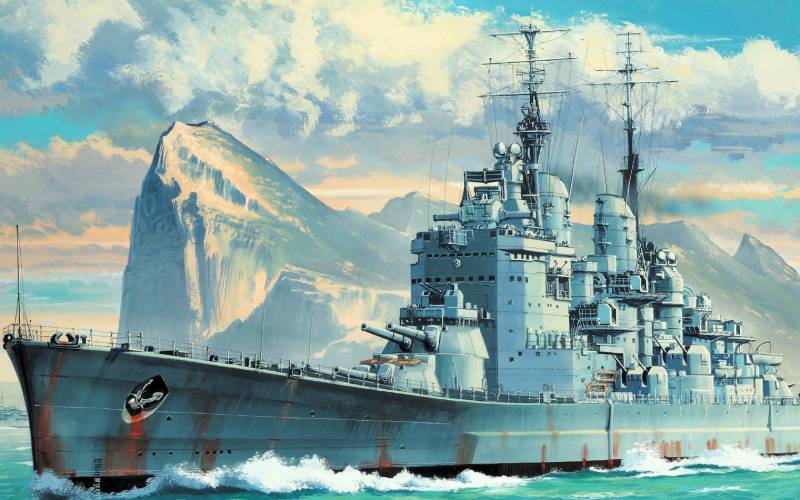
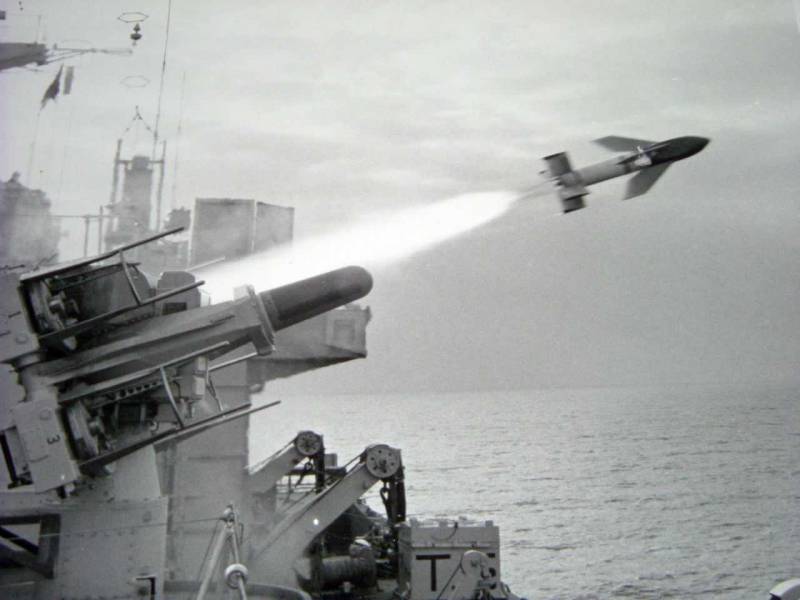
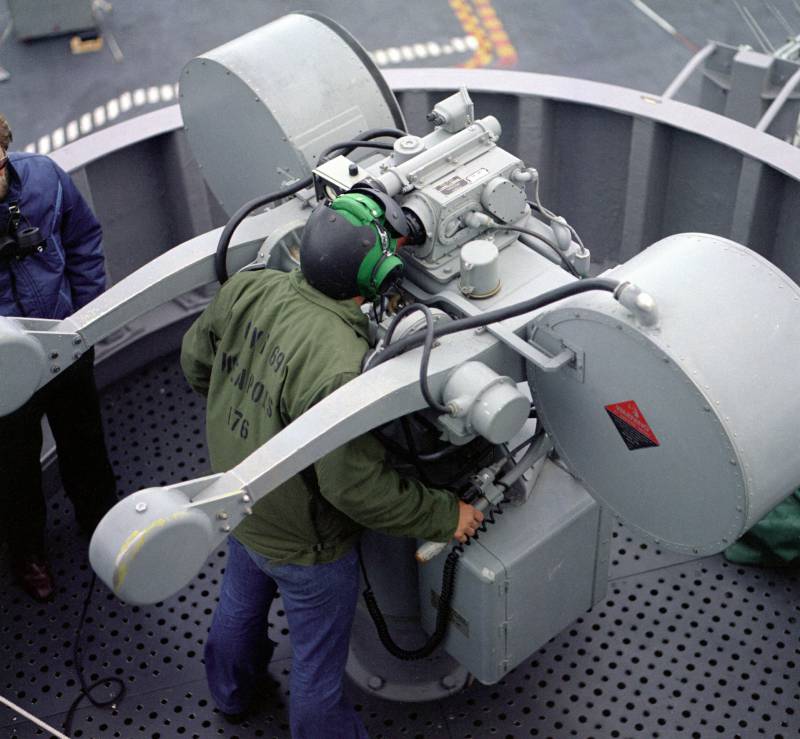
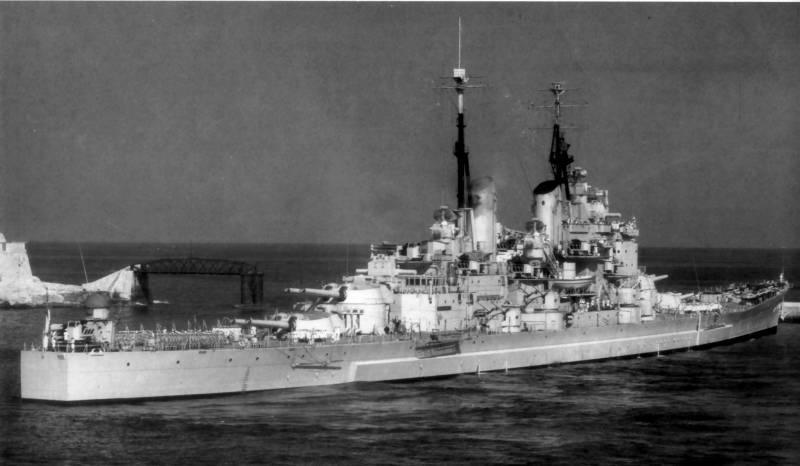
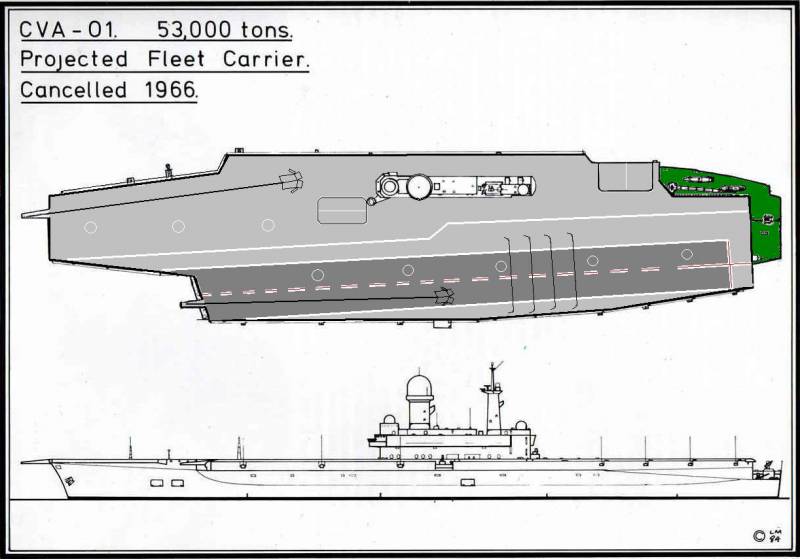
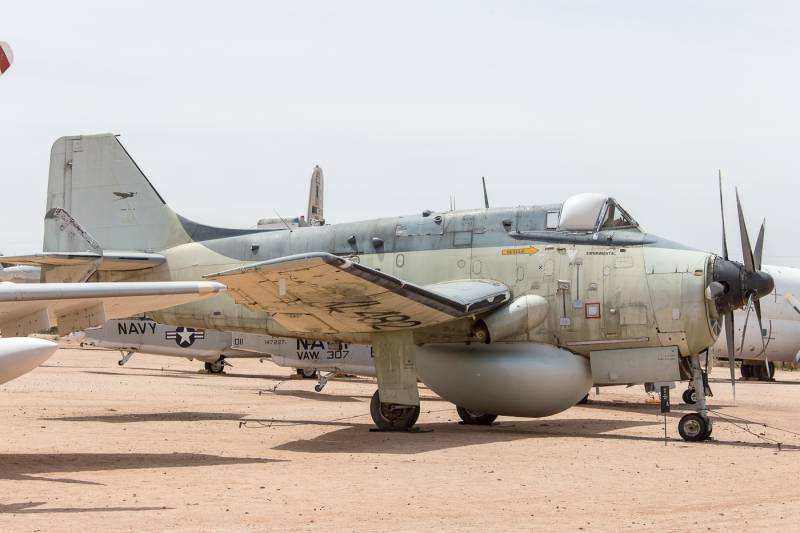
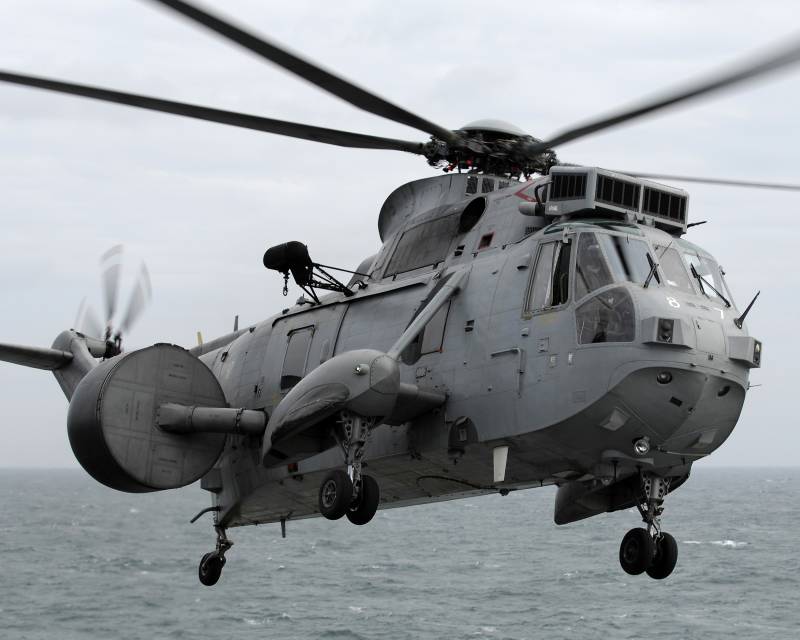
Information